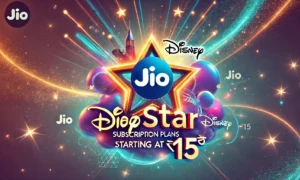Introduction: Amazon’s Bold Leap into Quick Commerce
In a strategic move to expand its footprint in India’s rapidly growing hyperlocal delivery market, Amazon is set to launch a 15-minute delivery trial in Bengaluru, marking its entry into the fiercely competitive world of quick commerce. This bold foray into ultra-fast delivery services places Amazon in direct competition with India’s homegrown giants like Blinkit, Zepto, and Swiggy Instamart, which have already set the stage for hyperlocal deliveries in under 30 minutes.
Quick commerce, also known as q-commerce, is an emerging sector within the broader e-commerce landscape, offering lightning-fast delivery times (typically between 10 to 30 minutes) for everyday essentials, groceries, and even prepared meals. With its new service in Bengaluru, Amazon is aiming to tap into the growing consumer demand for speed, convenience, and affordability in the delivery of groceries and other everyday items. This strategic move is a significant step for the e-commerce behemoth, signaling its intent to capture a larger slice of the hyperlocal delivery market, which has seen a surge in demand in recent years.
Amazon’s entry into quick commerce comes at a time when competition in India’s food and grocery delivery market is intensifying. To maintain its dominance, Amazon is betting on its established infrastructure, deep pockets, and global expertise. But will that be enough to challenge the well-entrenched competitors that have already gained the trust of millions of consumers across India?
In this article, we’ll delve into the specifics of Amazon’s 15-minute delivery trial in Bengaluru, analyze its potential impact on the hyperlocal delivery landscape, and explore the broader implications of Amazon’s entry into this fast-paced market. We will also examine the competition, consumer behavior trends, and the challenges Amazon might face as it rolls out its quick commerce strategy in India.
Amazon’s Entry into Quick Commerce: What We Know So Far
The 15-Minute Delivery Trial: Key Features
Amazon’s entry into the quick commerce market is marked by the launch of a 15-minute delivery trial for select products in Bengaluru. This trial, which started in early December 2024, will focus on delivering groceries, personal care products, and essential items to consumers within 15 minutes of placing an order. Leveraging its existing infrastructure and advanced supply chain technologies, Amazon intends to provide customers with a seamless, rapid, and highly efficient shopping experience.
The trial will be available in specific areas of Bengaluru, particularly in high-density residential neighborhoods and near key office hubs, which are ideal for fast deliveries. Initially, Amazon will offer a curated selection of products that include groceries, snacks, beverages, hygiene products, and other everyday necessities. According to sources familiar with the launch, the trial period will last for three to six months, after which Amazon will assess customer feedback, operational efficiency, and market demand to refine and scale the service.
Key Components of Amazon’s Quick Commerce Strategy
- Hyperlocal Fulfillment Centers: Amazon will use a combination of its existing fulfillment network and dark stores—small, localized warehouses that stock popular products for quick dispatch. These dark stores will be strategically located across Bengaluru to enable lightning-fast deliveries to consumers.
- Prime Membership Integration: The 15-minute delivery service is expected to be integrated into Amazon Prime, allowing members to access quick deliveries at no additional cost. Non-Prime customers, however, might face a nominal fee for faster delivery.
- Advanced AI and Data Analytics: Leveraging its advanced algorithms, Amazon will predict demand patterns, optimize inventory, and ensure efficient routing of deliveries. The company’s robust supply chain and data-driven approach will give it an edge in reducing delivery times and operational costs.
- Partnerships with Local Retailers: In addition to utilizing its own inventory, Amazon is expected to collaborate with local retailers and smaller vendors to expand the range of products available for 15-minute delivery. These partnerships could also help Amazon to create a more localized and cost-effective delivery network.
The Competition: Who Amazon is Up Against
Amazon’s entry into the quick commerce market directly pits it against several well-established players in the Indian market, each with its own set of strengths, weaknesses, and strategic advantages.
| Company | Market Share | Delivery Time | Key Differentiators |
|---|---|---|---|
| Amazon | N/A (New Entry) | 15 minutes | Global brand, existing infrastructure, tech expertise |
| Blinkit | 25% | 10-20 minutes | Pioneering quick commerce in India, large product range |
| Zepto | 20% | 10 minutes | Super-fast delivery, strong brand recognition |
| Swiggy Instamart | 18% | 15-30 minutes | Established platform, deep integration with Swiggy app |
| Dunzo | 15% | 15-30 minutes | Focus on delivery of varied items (groceries, medicines) |
| BigBasket | 10% | 30 minutes | Strong grocery focus, established network |
Analyzing Amazon’s Competitive Advantage
Despite entering a market already populated by strong players, Amazon has several advantages that could help it succeed in the quick commerce race:
1. Global Infrastructure and Logistics Network
Amazon’s existing infrastructure, including its robust supply chain management system and vast network of warehouses, will be a critical asset in its quick commerce venture. Unlike other competitors who rely primarily on third-party logistics and regional fulfillment centers, Amazon’s vertically integrated logistics network—backed by its vast e-commerce operations—will allow it to offer faster deliveries and a more reliable service.
Additionally, Amazon’s Amazon Prime membership program, which already offers perks such as free two-day delivery and exclusive discounts, will likely be a major driver for consumers to opt for Amazon’s quick commerce services. The company’s established relationship with millions of Prime members will provide it with a ready base of customers who are already accustomed to Amazon’s shopping experience.
2. Data-Driven Insights and AI Technology
Amazon has a significant edge over its competitors when it comes to utilizing artificial intelligence (AI) and data analytics. The company’s ability to predict consumer demand, optimize inventory management, and streamline delivery routes through AI technology will help it achieve its goal of delivering products in under 15 minutes. Amazon’s experience with machine learning and predictive analytics, honed through years of e-commerce dominance, will enable it to make data-driven decisions that improve customer satisfaction and reduce operational costs.
3. Brand Trust and Loyalty
Amazon is one of the most trusted brands globally, and its reputation for reliable service and fast delivery is a major competitive advantage. Many consumers already associate Amazon with convenience and affordability, which means that Amazon’s quick commerce trial will likely attract a substantial number of users in Bengaluru, especially those who are already regular Amazon shoppers. The company’s ability to cross-sell products within its ecosystem—leveraging everything from Amazon Fresh to Prime Video and Alexa—could further enhance the customer experience.
Challenges Amazon Faces in Quick Commerce
Despite the advantages, Amazon will also face several hurdles as it enters the highly competitive quick commerce space:
1. Logistics and Delivery Efficiency
One of the key challenges in the quick commerce sector is the last-mile delivery. Ensuring timely deliveries within 15 minutes, especially during peak hours, will require Amazon to fine-tune its logistics network. The company will need to optimize its route planning and manage a fleet of delivery personnel that can handle the pressure of fast deliveries in congested urban areas like Bengaluru.
Additionally, while Amazon’s logistics infrastructure is world-class, quick commerce relies heavily on hyperlocal fulfillment. Establishing and maintaining dark stores in the right locations will require significant investment, and operational efficiency will be paramount to maintaining profitability in a business with razor-thin margins.
2. Competition from Well-Established Players
Amazon will be up against some highly successful homegrown competitors that already have strong market share in India. Blinkit and Zepto, for example, have already mastered the art of ultra-fast deliveries and built solid consumer bases in urban areas. These companies understand the local market nuances, have established customer loyalty, and have significant brand recognition, which could pose challenges for Amazon as it looks to carve out its own niche.
3. Regulatory and Supply Chain Barriers
India’s regulatory environment can be challenging for foreign companies, especially when it comes to logistics and food delivery. Amazon will need to navigate local regulations, including those around food safety, delivery charges, and labor laws. Any missteps could impact its ability to scale quickly in the market.
Additionally, as Amazon looks to introduce perishable goods into its 15-minute delivery offerings, it will need to ensure quality control and compliance with food safety regulations, which could be more complicated than non-perishable items.
Conclusion: The Road Ahead for Amazon in Quick Commerce
Amazon’s foray into quick commerce with its 15-minute delivery trial in Bengaluru is a strategic move that could reshape the competitive landscape of India’s food and grocery delivery market. By leveraging its vast infrastructure, AI technology, and brand trust, Amazon has the potential to capture a significant share of the rapidly growing sector.
However, the competition is fierce, with well-established players like Blinkit, Zepto, and Swiggy Instamart already dominating the market. To succeed, Amazon will need to focus on operational efficiency, fine-tune its logistics network, and offer a seamless customer experience that builds on its existing e-commerce strengths. If the Bengaluru trial is successful, Amazon could expand its quick commerce offerings to other major cities in India, setting the stage for a new era in food and grocery delivery.
Ultimately, the entry of Amazon into the quick commerce race is good news for consumers. It promises faster deliveries, more choices, and an improved shopping experience, all of which will drive further innovation in the sector.


